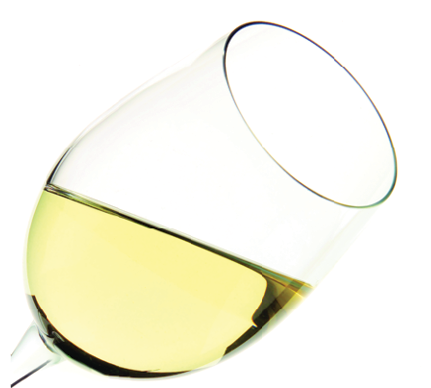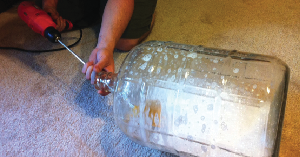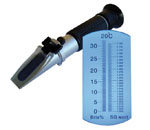
Fining of wine is the addition of one substance to remove another. This basic definition often stretches to include adding more than one substance at a time, stabilizing wine without necessarily removing something, and maybe even adding something that will need to be removed later by filtration. It is a diverse subject with several classes of materials involved in its use and lots of different intended outcomes. Whatever it is, it is clear that winemakers have practiced the technique of fining for a very long time. In his excellent Concepts in Wine Chemistry, Yair Margalit, Ph.D., quotes Robert Druitt of London from 1873: “Another operation is fining; which consists in adding to the wine some matter that shall curdle and contract, and entangle and carry with it to the bottom all floating particles which make the wine thick; and of course, as it clears the wine of particles of ferment, organized or unorganized, so it tends to make it not only bright to the eye, but better able to keep.” Still true, 141 years later.
Some winemaking authorities assert that no wine (or at least, no white wine) should ever reach the bottle without some sort of fining or filtration. Meanwhile, there are famous winemakers who boldly advertise on their wine labels that the product inside is “unfiltered and unfined,” implying higher quality as a result. In my view, each wine should be examined as an individual work of craft. I adhere to neither the “fine everything” nor the “always unfined” rules.
Fining may address a variety of issues, some in white (or rosé) wines and others in reds. In whites, the concern is mostly about clarity. Because the wine is so easy to see through, any leftover particles that make their way to the bottle may show up as cloudiness or sediment in a white wine. While reds may have the same condition, and many produce even more sediment than whites, that condition is generally considered more acceptable to wine drinkers in reds. In a different aspect, red wines may easily finish fermentation and aging with an undesirably strong tannic character. Whether from the grape variety, winemaking procedures, barrel aging, or excessive tannin additions, an overly tannic wine presents as astringent and unpleasant to drink. Long aging may mellow out such a wine, but to make it approachable at a younger age, the winemaker can turn to fining.
Rather than start with a chart or list of fining agents, I want to cover the techniques of fining from the standpoint of your winemaking objectives. The time that you will be thinking about fining is when you have a wine that may be improved by such a process. So we will first look at the wine conditions and characteristics that indicate a potential benefit from fining, then talk about the procedures involved. Finally, since the same materials may be used for several applications, we will review fining agents themselves and their modes of action.
Besides choosing the right fining agent to make the right improvement in your wine, you also need to choose when to apply it. Common stages for fining include before fermentation (as juice), during the aging process (in the cellar), and just before bottling (as a final conditioning).
White wine
White wines (and sometimes rosés) may be fined at the juice stage for a couple of reasons. Some varieties, notably Sauvignon Blanc, are subject to a condition called “pinking” where the colorless-to-pale-straw juice takes on a pink or bronze hue. The phenomenon can occur at several stages of wine production, beginning with must. It is caused by slight oxidation of certain colorless precursor compounds that, when exposed to air, can transform into their pink oxidized counterparts.
Since the color formed by “pinking” can persist into the finished wine and harm market acceptance, commercial winemakers with this problem usually address it in the juice stage to avoid further problems. Of course, your first line of defense here is to be sure you sulfite the must at the crush. Nonetheless, when pressed, the white juice may appear brown and pink juice may appear amber. Both pinking and browning can be fined out with polyvinylpolypyrrolidone (PVPP). For treating white wine to prevent browning, a simple midrange dose can probably be applied without much complication. For improving the color in a pink juice, however, a trial is almost essential. A low but effective dose will brighten the color and remove browning, but too much can strip out the anthocyanins themselves that are responsible for the reddish hue.
The next important juice-stage treatment for white wines is removal of proteins to assist with later clarity and help avoid problems with heat instability. Bentonite is the most popular agent for this purpose. However, since a wide range of protein components may be removed by bentonite, dose control is extremely important. Over-fining at this stage by using too much bentonite may lower amino nitrogen content of the juice. A lack of yeast assimilable nitrogen can cause the production of hydrogen sulfide and its associated stink. Settling and racking the freshly pressed white juice is probably a safer route to clearer white wine than is a bentonite addition to juice.
It is less problematic to treat white wine with bentonite during cellaring. With no further active yeast fermentation, there is no need to maintain amino acid levels. Every protein has a characteristic “isoelectric point,” a pH at which the oxygen atom on the carboxylic acid end of the molecule is negatively charged and the amino hydrogen on the other end of the molecule is positively charged. If the wine pH is lower than the isoelectric point of a given protein, that protein will be positively charged. That makes it amenable to removal by negatively charged bentonite. If the remaining protein concentration is low enough, the wine will be protected against either a chill haze (cloudiness when the wine is refrigerated) or a heat haze (precipitation if the wine becomes too warm). Since your wine will be kept under cellar conditions until consumed, a bentonite fining should provide the protein protection you need.
Also for general clarity, alginates may be used. Products such as Sparkolloid® or Klearmor® can be added directly to wine that is not clearing up on its own. The alginates are sometimes used as a “top dressing” over bentonite to help produce more compact lees and a more stable wine. This technique, adding a second fining agent that acts in a contrary manner from the first, is called “counter fining.” It finds application in several common pairs of fining agents.
Finally, you may want to do a fining-type addition near bottling. To maintain brilliant clarity we need to avoid precipitation of wine components after bottling. Gum Arabic is very effective for this purpose. Adding this material, derived from the sap of acacia trees in Northern Africa, helps stabilize a wine against throwing any further deposits. It also may impart a hint of sweetness and fuller mouthfeel.
Red wine
For red wines, a common juice-stage fining if excessive browning occurs is with PVPP, exactly as for white wines. Furthermore, during fermentation, bentonite can be applied if nitrogen management is needed.
It is much more common that red wines are fined in the cellar. Here, tannin removal in overly astringent wines gets a great deal of attention. Tannins are polyphenolic compounds that combine with proteins and render them insoluble. That is the basis of their discovery and historic use: plant-derived tannins are applied to animal hides to stabilize the proteins and produce leather. The same reaction occurs to the proteins in your mouth when you taste a highly tannic wine: the proteins lining your palate and tongue precipitate, producing the drying sensation of astringency.
While some astringency is desirable in a well-balanced red wine, too much makes it unpalatable. Long cellaring can reduce tannic astringency, but fining can get there sooner. A variety of water soluble proteins such as isinglass, gelatin, egg whites, and casein are available for fining astringent wine. In each case, the added protein combines with tannins in the wine, precipitates out, and can be left behind with a racking.
One additional treatment for red or white wines may be removal of sulfide aromas. This involves the addition of a copper sulfate solution to the wine to combine with hydrogen sulfide. It may be necessary to further fine the wine with inactivated yeast (yeast hulls or yeast ghosts) to adsorb excess copper and remove it. Products like Reduless® from Lallemand, offer the benefits of copper addition with less risk of overdoing it.
The agents and their actions
The first group is the minerals; bentonite, silica gel, and copper. Bentonite is an aluminum-silicate clay material, produced domestically from soils in Wyoming. In France, the corresponding material is called Montmorillonite, named after its source there, Montmorillon. The aluminum silicate anion is neutralized by a cation, typically sodium or calcium for winemaking purposes. Sodium bentonite is most commonly used, but because it produces more compact lees, calcium bentonite is also sometimes employed. When dispersed in water, bentonite forms platelets with negative charges on the flat surfaces. The platelets repel each other and remain suspended until the charges are neutralized. Since, at applicable pH levels, protein molecules are positively charged, they bind with the bentonite platelets and the charges are neutralized.
Silica gel (Kieselsol) is a very pure fining agent prepared from sodium silicate by addition of strong acid. The process results in an aqueous suspension, usually sold at a concentration of 30% by weight. The molecules have a negative surface charge and combine readily with proteins. While tannins can also combine with proteins, using tannins as counterfining agents after protein treatment has decreased in popularity in recent years. Silica is preferred because, unlike tannin, silica adds no flavor or astringency to the wine. In combination with gelatin or chitosan (added a few hours apart), a silica treatment can produce remarkable clarity.
The final mineral, copper, exhibits very straightforward action. In copper sulfate solution, the copper is in a +2 oxidation state and dissociates as Cu++. That positive metal ion readily reacts with the negatively charged sulfide ion in the -2 oxidation state: S=. The resulting combination, CuS, is a relatively insoluble metal salt that precipitates as a fine black mineral material from the wine. Racking away from it completely removes the reactive sulfide and leaves harmless sulfate behind.
The next group is the polysaccharides. The name is descriptive — polysaccharide means “many sugars.” The first category in this group is the alginates, derived from marine algae or kelp. Proprietary preparations such as Sparkolloid® or Klearmor® include an inert carrier like diatomaceous earth. The polysaccharide chain carries a positive surface charge. Materials that fail to settle out of wine during aging are often colloids that carry a negative surface charge. The polysaccharide molecules combine with and neutralize those colloids so they no longer repel each other and can drop out.
Gum Arabic is also a polysaccharide. It delays formation of sediment in wine by preventing crystal formation involving tartrates. It should be the last addition to the wine before bottling.
Finally, we have a polysaccharide that acts more like a protein: chitosan. Chitin provides the structural support of exoskeletons for marine creatures such as shrimp and crabs, as well as insects and some fungal species. When crustacean shells are treated with strong alkali solution, the chitin is partially deacetylated, producing chitosan. At wine pH, the polymer molecules are positively charged, just like proteins, allowing for effective fining/counterfining with products like Kieselsol.
The next group has just a single member. That is the synthetic polymer PVPP. This long, insoluble molecule has carbonyl groups much like proteins that form hydrogen bonds with the hydroxyl groups present on all polyphenolics, such as anthocyanins, catechins, and tannins. Because the PVPP molecule is large and rigid, it tends to attract and combine with small polyphenolics. Since anthocyanins are usually responsible for color and catechins for bitterness, PVPP finds its primary role in reducing those aspects. Overused, it may strip a wine of desirable complexity.
Specifically for tannin removal, we turn to the smaller and more flexible molecules represented by the proteins, which can twist and conform to the complex shape of the target tannins. That bending brings more of the protein carbonyl groups into close proximity with the tannin hydroxyls. Different proteins, with different molecular weights and chain lengths, tend to selectively remove different fractions of the overall wine tannins. In removing tannins, they remove primarily astringency, but also may act on bitterness and color.
The next few proteins are of animal origin. That is very much in keeping with historic wine traditions, however, modern concerns about allergies and interest in vegetarian or vegan diets have spurred some research into alternatives for tannin removal. PVPP offers one possibility, but as noted does not primarily act on astringent components. Another possibility may be non-shellfish chitosan. At least one chitosan product (Lallemand’s “No Brett Inside”) is of microbial origin. It is marketed as a product to remove Brettanomyces yeast, but — being chitosan — it may offer prospects for tannin removal as well.
Isinglass is protein derived from the swim bladders of sturgeons and other wild fish. It is a very large molecule and is among the mildest of the protein fining agents. It is less likely to strip wine of desirable complexity but, on the other hand, it has bulky lees and tends to degrade in storage, sometimes developing a fishy aroma.
Gelatin is made from skin and connective tissue of livestock. Cattle have been used in the past, but concerns about BSE (“mad cow”) have pushed nearly all gelatin production into derivation from pigs. Gelatin molecules range in size from smaller than isinglass to about the same size as that protein. Different fractions of gelatin are identified through their ability to “gel,” as expressed in Bloom units. With a small molecular size and flexible structure, gelatin combines preferentially with large, astringent tannin molecules. It has less effect on the color and bitterness components. It is considered an aggressive fining agent, and may need to be “counterfined” with added tannins or silica gel to avoid stripping the wine of desired character.
Egg whites contain albumen and globular proteins. Albumen is water soluble, but salt is needed for dissolving the globular proteins. Egg whites are less likely to strip wine than gelatin. They are seldom used in white wines because a counterfining with bentonite would be needed to remove excess protein to prevent haziness.
Casein is the principal protein of milk. With a molecular size even larger than that of isinglass, casein softens the tannin profile of red wines, but not as much as gelatin. For enological use, a winemaker can employ casein powder that is dissolved under alkaline conditions or use prepared potassium caseinate powder. More directly, skim milk or whole milk can be applied.
Whenever a wine has a condition that may be improved through fining, do a trial. You want to be sure that the effort and expense will be rewarded by improving the wine. So, if you go along with my philosophy, you will evaluate each wine on its own merits. You do not need to fine every wine, but a well-chosen fining may turn a bad wine good or a good wine great.






